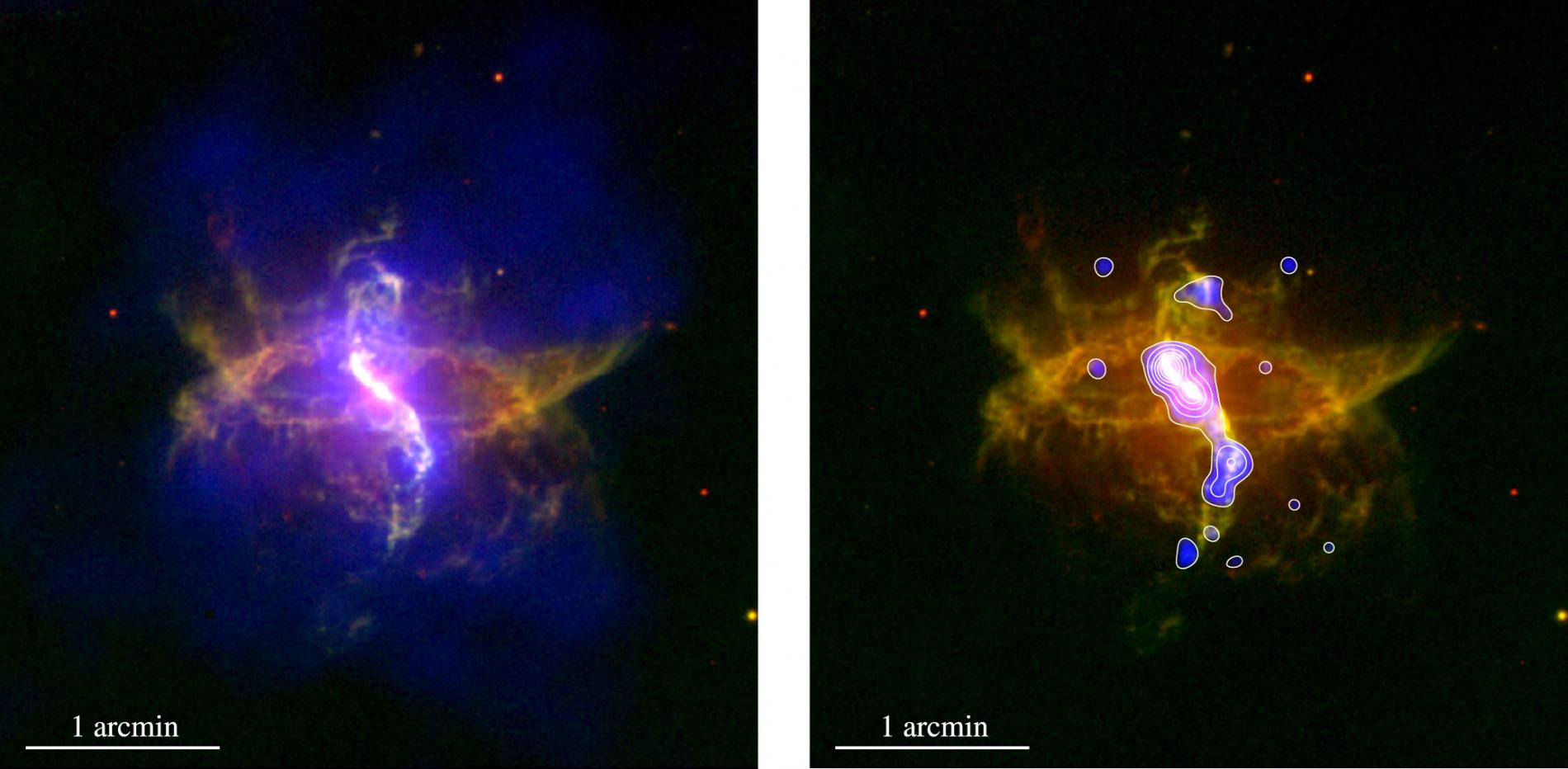R Aquarii: a symbiotic star with active galaxy features
The Institute of Astrophysics of Andalusia (IAA-CSIC) participates in the X-ray analysis of R Aquarii, a double star formed by a red giant star and a white dwarf. The system shows a very complex morphology, with a bipolar S-shaped jet emerging from the white dwarf and an extensive nebula with filaments and cavities
R Aquarii is such a complex star that it is hard to describe. It is a double system consisting of a red giant, a solar-type star that has already exhausted its fuel, and a white dwarf, the "bare" core of a star that has shed its outer layers. But the red giant, unlike its placid analogues, undergoes pulsations that increase its brightness and expand its envelope every 385 days, and the white dwarf has a disc through which it steals material from its giant companion and a jet that emerges from its poles and through which it releases excess gas. Now, a detailed analysis of the X-ray properties of this double star shows that the jet has characteristics similar to those produced by supermassive black holes in the cores of active galaxies.
“This peculiar star system has shaped an equally peculiar morphology, where all the components seem to be interconnected: the mass loss of the red giant, the accretion of the white dwarf and the development of the intricate shapes –says Jesús A. Toalá, a researcher at the Institute of Radio Astronomy and Astrophysics at UNAM (Mexico) who leads the work–. R Aquarii is surrounded by an exquisite hourglass-shaped nebula with numerous knots, filaments and cavities, and in its central regions we see the S-shaped jet, which also has nodules with stronger X-ray emission”.
Not in vain R Aquarii, located about 650 light years away, is one of the best studied symbiotic stars. We know, for example, that some features of its nebula appear to be due to past explosive episodes: enough material accumulated on the white dwarf's surface to trigger hydrogen fusion, pumping energy and gas into space and generating, in 1073 and in the 1770s, two separate rings of material that are observed with optical telescopes.
For their part, the X-ray satellites have made it possible to gain a deeper insight into the functioning of the system. "Thanks to the Chandra satellite, it was corroborated that material was indeed falling towards the white dwarf, or that the X-ray bright nodules were due to the precession of the jet: the rotation axis of the white dwarf changes gradually and the spatial distribution of X-ray emitting gas changes every few years (hence, also, the S-shape of the jet). Given the potential of the X-ray study of this object, we have reanalysed observations from the XMM-Newton satellite that had been ignored since 2005", says Martín A. Guerrero, a researcher at the Institute of Astrophysics of Andalusia (IAA-CSIC) who participates in the study.

Using specialised techniques, the science team has been able to show the presence of X-rays throughout the nebula, and has found that the gas responsible for the extended emission has similar physico-chemical characteristics to that found in one of the jet nodules, suggesting that it is the jet that feeds the extended hot bubble seen in X-rays.
Moreover, the precession angle that gives the jet its S-shape is also at the origin of the nebula's morphology. "Theoretical predictions suggest that nebulae with extended bubble pairs form at angles of more than 40 degrees, and in R Aquarii we see an angle of about 50 degrees. Thus, we suggest that the blister-like structures we observe at the ends of the jet disintegrate and feed hot gas into the more extended bubble. This would be a similar process, although on a smaller scale, to the creation of hot bubbles produced by active galaxies harbouring supermassive black holes", concludes Jesús A. Toalá (IRyA-UNAM).
J. A. Toalá et al. "An XMM-Newton EPIC X-ray view of the Symbiotic Star R Aquarii". Astrophysical Journal Letters, March 2022. https://doi.org/10.3847/2041-8213/ac589d
Instituto de Astrofísica de Andalucía (IAA-CSIC)
Unidad de Divulgación y Comunicación
Silbia López de Lacalle - sll[arroba]iaa.es - 958230676
https://www.iaa.csic.es
https://divulgacion.iaa.csic.es

